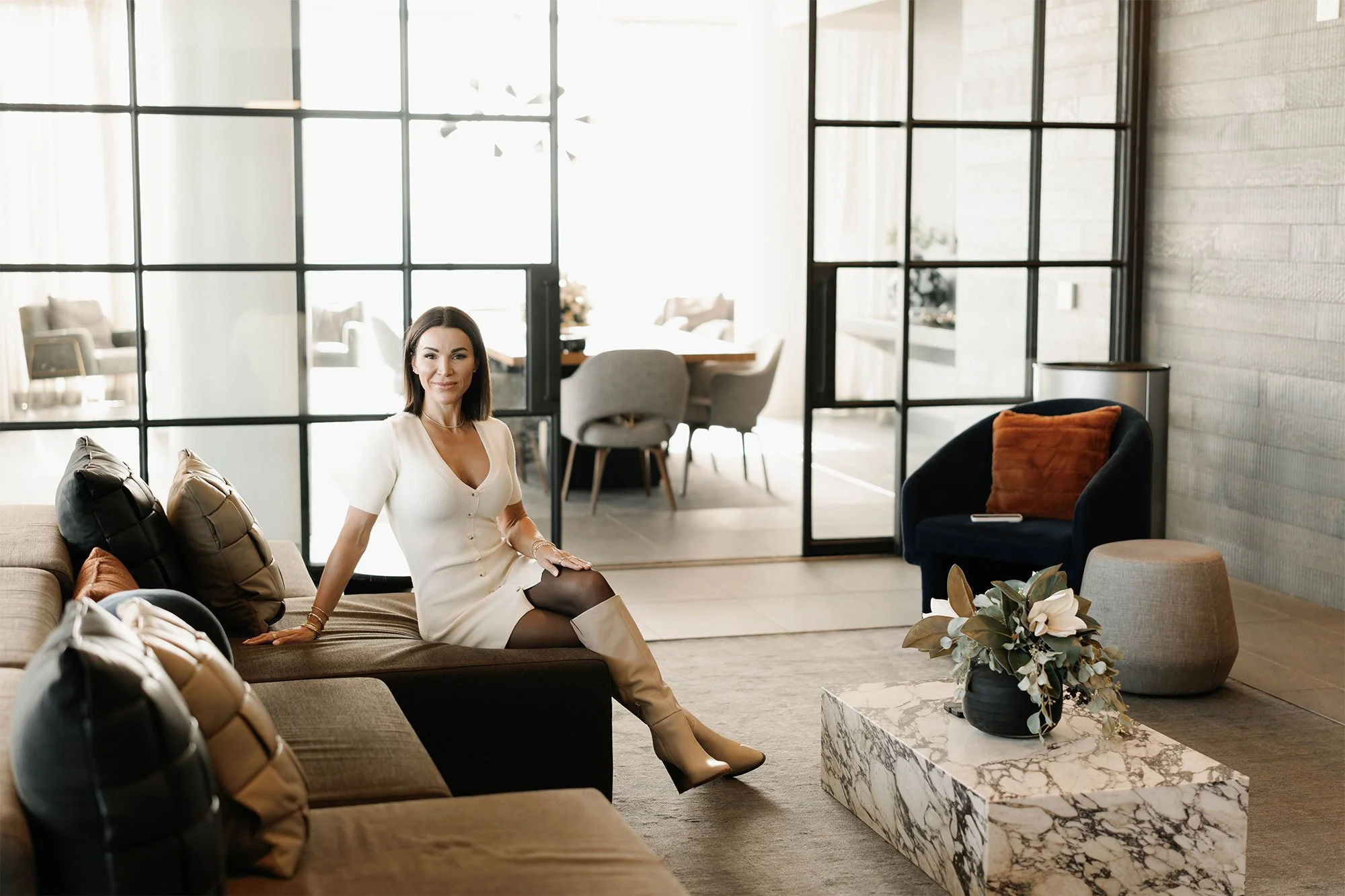The Cost of Bad Design: Common Mistakes That Decrease Property Value
As a real estate developer, every square foot you build or renovate carries financial weight. From construction costs to sales strategy, every decision must be aligned with the bottom line: profitability. But amid the spreadsheets, contractor bids, and timelines, one crucial element often gets overlooked—or undervalued: design.
Bad design isn't just a missed aesthetic opportunity; it's a direct hit to your project’s valuation, buyer appeal, and long-term ROI. While excellent design can elevate a mid-range property to luxury status, poor design can make even the most expensive development difficult to sell or lease.
In this article, we’ll break down the true cost of bad design, explore common architectural and interior design mistakes, and offer practical advice on how developers can avoid them to maximize property value and marketability.
Why Design Is a Developer’s Competitive Advantage
In today’s competitive real estate landscape, good design isn’t optional—it’s strategic.
Savvy buyers and renters aren’t just looking for square footage; they’re looking for well-planned, aesthetically compelling, and lifestyle-supportive spaces. And design has the power to:
Drive faster sales
Increase per-square-foot value
Enhance buyer perception of quality
Reduce long-term maintenance issues
Boost word-of-mouth and brand reputation for your developments
On the flip side, bad design decisions can lead to price reductions, extended time on market, buyer resistance, or in worst-case scenarios—remodeling before resale.
Let’s look at where things typically go wrong:
1. Poor Space Planning and Layouts
A property’s layout is one of the first things buyers and tenants evaluate. Unfortunately, many developments suffer from layouts that prioritize cost over livability.
Common Mistakes:
Long, narrow corridors wasting usable space
Bedrooms opening directly into public areas like kitchens or living rooms
Bathrooms positioned in awkward, highly visible spots
Kitchens too far from entryways or dining areas
Living areas with no natural flow or focal point
Impact on Value: Bad layouts make units feel smaller and less functional. For multi-unit developments, one poor design replicated across dozens or hundreds of units compounds the impact exponentially.
Developer Tip: Always work with architects and interior designers who understand spatial ergonomics and user behavior. Don’t just look at the plan on paper—simulate how someone would actually live in the space.
2. Overlooking Natural Light and Ventilation
Light sells real estate. Period. Natural light and airflow are essential to making interiors feel open, healthy, and high-end.
Common Mistakes:
Minimal or poorly placed windows (especially in bedrooms and bathrooms)
Excessively deep floorplates that limit light penetration
Blocking sightlines with built-ins or poor wall placement
Using dark finishes or unnecessary partitions that absorb light
Impact on Value: Dark, poorly ventilated spaces are immediate turnoffs. They often require more artificial lighting and HVAC use, raising long-term costs and hurting resale appeal.
Developer Tip: Optimize window placement and orientation based on sun path studies. Use materials and layouts that reflect and diffuse light, even in smaller units.
3. Ignoring Local Context and Buyer Demographics
Design that works in one city—or even one neighborhood—may fail in another.
Common Mistakes:
Using a generic design template across multiple markets
Misunderstanding buyer needs (e.g., omitting bathtubs in family-oriented units)
Failing to align amenities with lifestyle expectations
Impact on Value: When a development doesn’t reflect local culture, climate, or buyer psychology, it feels disconnected. This weakens both marketing and emotional buy-in from potential buyers.
Developer Tip: Conduct thorough market research. Collaborate with local interior designers and architects who understand regional preferences and economic drivers.
4. Undervaluing Outdoor Space
In the post-pandemic world, outdoor space is more important than ever—yet many developments still treat it as an afterthought.
Common Mistakes:
Balconies that are too small to use
Poor landscaping or no green space at all
Lack of outdoor furniture planning
Unusable rooftop or common areas
Impact on Value: Usable outdoor space is a powerful differentiator and often a decision-making factor. Especially in urban developments, buyers and renters crave a connection to nature.
Developer Tip: Design balconies and terraces that can fit real furniture. If space is limited, integrate green features vertically—like green walls or window planters. Make shared outdoor amenities feel luxurious and functional.
5. Misaligned Material Selection
Cheap materials don’t just look bad—they also deteriorate quickly, increasing maintenance costs and complaints post-sale.
Common Mistakes:
Using faux finishes or low-grade laminates
Inconsistent material palettes across units
Visible wear-and-tear during property tours (even in new builds)
Impact on Value: Buyers associate material quality with overall construction quality. They’re more likely to walk away from a deal—or negotiate heavily—if finishes feel flimsy.
Developer Tip: Choose materials that balance aesthetics, durability, and cost. Opt for commercial-grade fixtures in multi-unit buildings. A well-designed material board can make even modest selections feel upscale.
6. Poor Acoustic Planning
Noise is one of the biggest complaints among residents in poorly designed developments.
Common Mistakes:
Shared walls between bedrooms and living areas in multi-units
No soundproofing between floors or units
Hard surfaces that amplify footfall and echo
Impact on Value: Noise issues lead to higher turnover, negative reviews, and reputational damage—especially in rental developments.
Developer Tip: Incorporate sound mitigation strategies from day one. Use acoustic underlays, soft materials where appropriate, and double insulation in shared walls. Think about sound paths as much as visual ones.
7. Inadequate Storage Solutions
Buyers expect not just living space—but storage space. This is especially crucial in urban or high-density developments.
Common Mistakes:
No dedicated closets or storage areas
Kitchens without sufficient cabinetry
No space for laundry equipment, cleaning supplies, or bikes
Impact on Value: Lack of storage makes homes feel less livable and less functional, directly impacting perceived value.
Developer Tip: Maximize every nook and cranny. Use custom millwork to create built-ins, floating shelves, and under-bench storage. Integrate vertical space creatively—especially in compact units.
8. Over-Designing or Under-Designing Amenities
Amenities sell lifestyle. But overbuilding amenities that go unused—or skimping where it counts—can waste capital and weaken marketing.
Common Mistakes:
Building gyms or lounges that are too small to be functional
Offering too many specialty amenities that don’t match buyer profile (e.g., wine cellars in entry-level condos)
No work-from-home accommodations in post-pandemic design
Impact on Value: Unused or misaligned amenities become sunk costs, with little to no ROI. On the flip side, missing critical lifestyle features makes your development less competitive.
Developer Tip: Design amenities that serve real, researched buyer needs. Prioritize quality over quantity. A well-designed co-working lounge may be more valuable than a half-baked game room.
9. Skipping Design Professionals
In an effort to cut costs or speed timelines, some developers attempt to minimize the role of architects and interior designers. This is a mistake with compounding consequences.
Common Mistakes:
Using generic plan templates without site-specific optimization
Relying solely on contractors or engineers for spatial decisions
Omitting interior design consultation on finishes and layouts
Impact on Value: Without professional input, developments often feel generic, awkward, or disjointed—hurting both appeal and reputation.
Developer Tip: Bring designers in early. Collaborative planning with architects and interior designers ensures a more cohesive, efficient, and profitable result. Their involvement often prevents expensive rework later.
Design Is an Investment, Not a Cost
Bad design costs more than you think—not just in budget overruns or change orders, but in lost opportunities, sluggish sales, and diminished brand equity.
At Maybeck Design, we partner with developers to design smarter, faster-selling, and higher-performing properties. From concept to final finishes, our goal is to help you unlock maximum value through intentional, market-savvy design.
Let’s Build Something Valuable
If you're a real estate developer looking to increase ROI, attract discerning buyers, and future-proof your investment through exceptional design—let’s talk.


